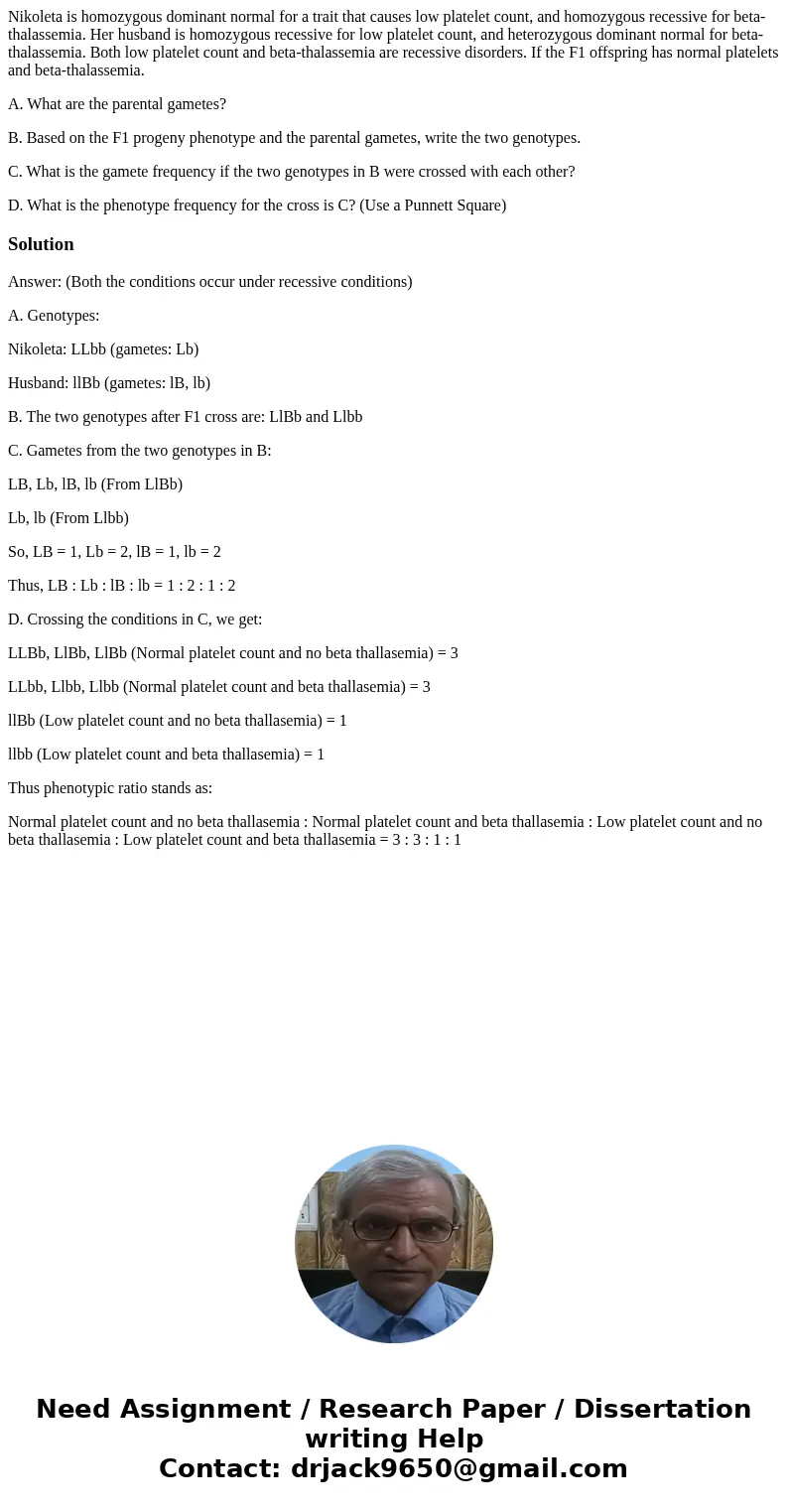Nikoleta is homozygous dominant normal for a trait that caus
Nikoleta is homozygous dominant normal for a trait that causes low platelet count, and homozygous recessive for beta-thalassemia. Her husband is homozygous recessive for low platelet count, and heterozygous dominant normal for beta-thalassemia. Both low platelet count and beta-thalassemia are recessive disorders. If the F1 offspring has normal platelets and beta-thalassemia.
A. What are the parental gametes?
B. Based on the F1 progeny phenotype and the parental gametes, write the two genotypes.
C. What is the gamete frequency if the two genotypes in B were crossed with each other?
D. What is the phenotype frequency for the cross is C? (Use a Punnett Square)
Solution
Answer: (Both the conditions occur under recessive conditions)
A. Genotypes:
Nikoleta: LLbb (gametes: Lb)
Husband: llBb (gametes: lB, lb)
B. The two genotypes after F1 cross are: LlBb and Llbb
C. Gametes from the two genotypes in B:
LB, Lb, lB, lb (From LlBb)
Lb, lb (From Llbb)
So, LB = 1, Lb = 2, lB = 1, lb = 2
Thus, LB : Lb : lB : lb = 1 : 2 : 1 : 2
D. Crossing the conditions in C, we get:
LLBb, LlBb, LlBb (Normal platelet count and no beta thallasemia) = 3
LLbb, Llbb, Llbb (Normal platelet count and beta thallasemia) = 3
llBb (Low platelet count and no beta thallasemia) = 1
llbb (Low platelet count and beta thallasemia) = 1
Thus phenotypic ratio stands as:
Normal platelet count and no beta thallasemia : Normal platelet count and beta thallasemia : Low platelet count and no beta thallasemia : Low platelet count and beta thallasemia = 3 : 3 : 1 : 1

 Homework Sourse
Homework Sourse